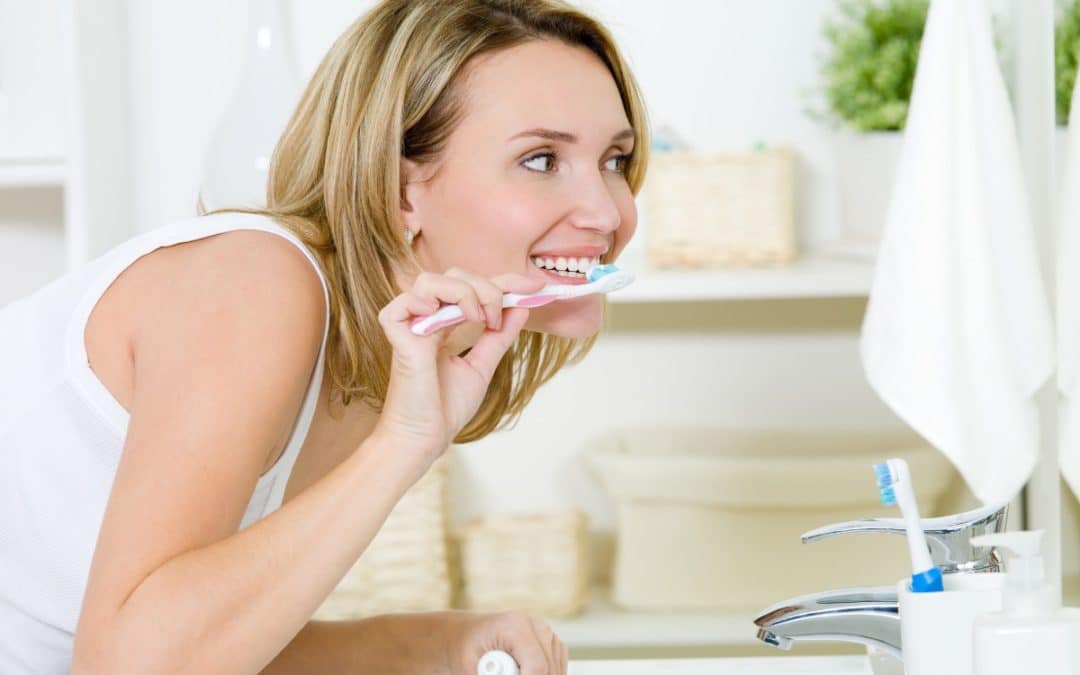Dentists recommend brushing your teeth regularly, usually 3 times a day or after each meal, but how do you make sure that you’re brushing with the proper technique and tools to make the most of your brushing? Here are 6 ways to make your brushing count.
1. Technique is Key
It’s equally important to brush properly as it is to brush regularly, so how do you make your brushing count? Use the correct amount of toothpaste, usually a pea-sized amount is sufficient for most adults and children. Aim the toothbrush at a 45 degree angle to the gumline. Use gentle circular motions as well as up and down and side to side motions when brushing. Make sure that you brush all the quadrants of your mouth and all the surfaces of your teeth. Focus specifically on cleaning the teeth on the top and bottom and both the left and right sides of your mouth as well as the front and back sides of each section of teeth.
2. Use a Timer
Dentists typically recommend brushing for 2 minutes each time you brush your teeth. It can be difficult to estimate how long this is, so it may be helpful to set a timer for 2 minutes to encourage thoroughness. Some electric toothbrushes come with built in timers which may be helpful as a reminder and so that you always have the timer with you when you brush your teeth. If you want to make it fun, brush your teeth to your favorite song, as most pop songs are about 2 minutes long.
3. Use a Soft Bristled Toothbrush
It’s important to select the right toothbrush to make your brushing count. Look for a soft bristled toothbrush so that it will be gentle on your gums and tooth enamel. Also, make sure to use a toothbrush that is approved by the American Dental Association (ADA) to ensure that it is both safe and effective.
4. Choose the Right Toothpaste
There are many options available for toothpaste, ranging from different flavors to match your tastes to different active ingredients to meet your specific needs. To make your brushing count, it’s important to choose the right toothpaste for you. First of all, look for one that is approved by the ADA and that includes fluoride in the ingredients as fluoride is known to help strengthen your teeth. Then look for other features that might help you meet your oral hygiene goals, for example to help with sensitivity, fighting tartar or whitening.
5. Don’t Forget to Floss!
Flossing is an important companion to brushing. If you’re not flossing, you may be missing up to 40% of the surface area of your teeth. Flossing can help make your brushing count because it can help to keep the surface area of your teeth clean and free of plaque and debris which is important to helping you fight tooth decay and cavities.
6. Regular Professional Cleanings
Regular professional cleanings are also an important and crucial compliment to brushing at home because a dental hygienist can help to scrape off tartar build up and stains that brushing alone cannot remove. A professional cleaning may also reach areas that are difficult to reach on your own where build up is common and cavities are prone to form, giving you both a head start on your dental care regimen and helping to make all your effort with brushing worth it in the fight to stay cavity free and keep your smile bright and healthy.
Call our Lubbock Dental Office to make an appointment with a dentist who may be able to help you find out more about this topic, and improve your oral health.
